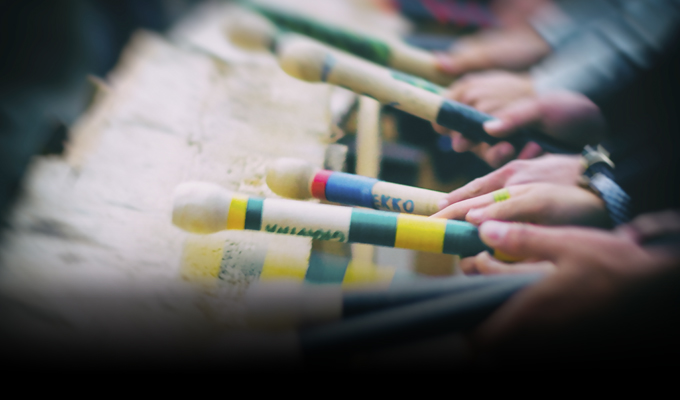The World Music Listening Guides

The World Music Listening Guides: Intercultural Music Education Courses aim to provide critical tools for understanding musical diversity. Analysing the dance and music characteristics of pieces from different world music traditions, the Guides deepen the close relationship between music, culture and society by combining texts, images and multimedia animations made by using and highlighting the audio-visual material held in the IISMC Archive.
Starting from one significant piece of a particular music tradition, the Guides explore the general aspects of the performance such as the cultural context, the performing practices, the instrumental ensemble, the song lyrics and the symbolic elements of the performance. The Guides also offer the analytical elements needed to understand the formal and syntactic processes typical of each music tradition, such as the metric-rhythmic structures, the vocal and instrumental melodic variation processes, the relationship between music and sung verse, tuning systems, combinations of the musical parts and the relationship between music and dance movements.
Organised into progressive levels of complexity, the teaching materials presented in the different Guides are intended to provide students and teachers with a support for intercultural music education, thus aimed at different types of audience, including those not yet expert.
Music for spirit possession cult in Burma (Myanmar)
edited by Lorenzo Chiarofonte
In Burma (Myanmar), the local form of Theravada Buddhism includes the worship of local spirits, the nat, mythical figures of exceptional human beings who encountered a violent death and became spirits. Some of these spirits have been organised into a pantheon of 37 figures since the beginning of the Burmese monarchy (11th century), as part of a state cult: the Thirty-seven Lords, or Thounze-hkunna Min in Burmese. Devotees today turn to the nat to obtain help and advice; in turn, they organise a nat pwe ceremony.
Canto a lo Poeta. Guitarroneros and Poet-Singers of Central Chile
edited by Stefano Gavagnin
In some rural localities of central Chile, at times even just a few kilometres from the metropolis of Santiago, a tradition of sung folk poetry, rooted in the deep layers of Spanish colonial culture, has survived, albeit with syncretically absorbed native elements.
In their texts (versos) – partly learnt through oral transmission and partly newly created or improvised – the singers of canto a lo poeta deal with biblical and parabiblical themes (or canto a lo divino) and profane themes (canto a lo humano). The profane themes include poems “for history, astronomy, arithmetic” and so on, reflecting ancient forms of knowledge of Mediaeval origin, while other songs are embedded in social life: weddings, funerals, etc.
The cantores (poet-singers) accompany themselves on guitars with specific transposed tunings and especially the Chilean guitarrón, an unusual local derivation from the Spanish baroque guitar. The modal settings along with the metric verse forms and the tradition of poetic counterpoint have evolved from a Hispanic colonial substratum, shared by various other regions of Latin America.
Cuban Santería Music
edited by Marco Lutzu
The Regla de Ocha or Santería is the best known of the Afro-Cuban syncretic religions. The result of the encounter between the Catholicism of the Spanish conquistadors and the cults of the Yoruba slaves deported to the Caribbean island, it has tens of thousands of practitioners in Cuba and various other countries around the world.
The pantheon of the Santería is populated by the orichas, to whom the faithful recognise characters common to Yoruba deities (Changó, Yemayá, etc.) and Catholic saints (St. Barbara, San Lazaro).
In honour of the orichas, the faithful organise different types of ceremonies in which music is present. The most important is called Toque de santo, and involves the use of sacred batá drums, whose purpose is to call the orichas back to earth through rhythms that contribute to achieving altered states of consciousness.
